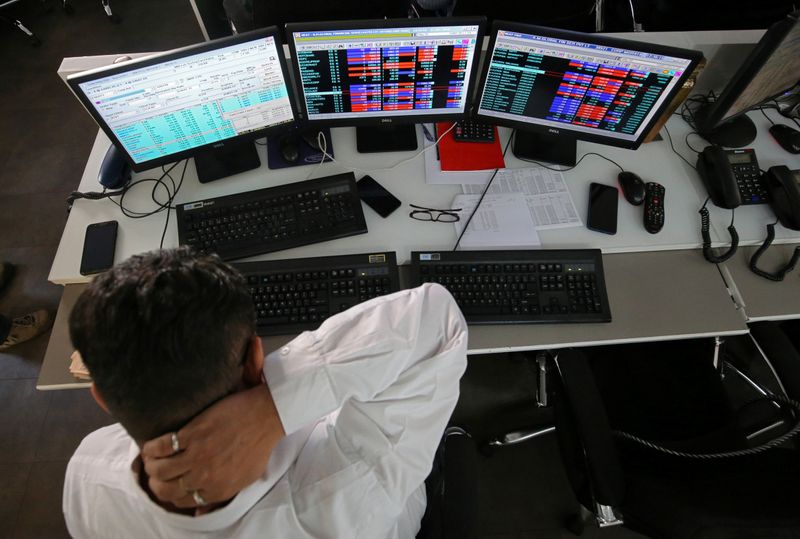This post was originally published on this site
https://i-invdn-com.akamaized.net/trkd-images/LYNXMPEG0U0DP_L.jpg
By Patturaja Murugaboopathy and Chandini Monnappa
(Reuters) – Indian retail and institutional investors shied away from domestic equity markets last year as a slowing economy ate into stock valuations and earnings. Their purchases of equity mutual funds in 2019 were the lowest in three years.
Data from the Association of Mutual Funds in India (AMFI) showed local investors bought a net 712.7 billion rupees ($10.03 billion) in equity funds last year, a 36% fall from 2018, and the lowest net purchase since 2016.
(GRAPHIC: Domestic flows – https://fingfx.thomsonreuters.com/gfx/mkt/13/1626/1601/domestic%20flows1.jpg)
The drop in domestic investment was due to worries over the economy which is forecast to grow at its slowest pace in 11 years in the current fiscal year ending March, analysts said.
“The economy is slowing down and earnings are not coming. When investors’ confidence on the overall economy goes low and they are not seeing returns on their investments in the past, generally the pace of flows slows down,” said Akhil Chaturvedi, head of sales at Motilal Oswal Asset Management Company.
Purchases of mutual funds by domestic investors have traditionally been a support for the Indian stock market, particularly in recent years as concerns over the country’s accelerating consumer prices, rising global yields and a falling rupee caused overseas investments to turn fickle.
Foreigners made cumulative purchases of 2.97 trillion rupees worth of Indian stocks in the last five years, less than the 3.5 trillion rupees bought by domestic investors, data from Refinitiv Eikon and Central Depository Services Ltd showed.
Investors who normally conduct large transactions in equity mutual funds have been taking out their money in recent months, said Deepak Jasani, head of retail research at HDFC Securities Ltd.
The redeemed money “is instead being used to buy debt products or used for individual business needs,” he said.
The AMFI data showed debt funds witnessed an inflow of 696.9 billion rupees last year, compared with outflows worth 349.9 billion rupees in 2018.
India’s NSE Nifty 50 index () has fallen more than 1% so far this year, however, some analysts said government reforms and lower interest rates could lift the market.
The Nifty index gained 12% last year, helped by a rally after the government cut the corporate tax rate in September.
The government is likely to cut tax on long-term capital gains from equity investments in it next budget, in an attempt to boost economic growth, Reuters reported in December.
Finance Minister Nirmala Sitharaman will present the budget for the 2020/21 fiscal year on Feb. 1.
“Going forward, the pace of flows will be a function of the revival of the economy, markets sustaining their positive momentum, and confidence in the market over the next one or two years,” said Motilal Oswal’s Chaturvedi.
(GRAPHIC: India’s GDP growth – https://fingfx.thomsonreuters.com/gfx/mkt/13/1541/1516/India’s%20GDP%20growth.jpg)
Fusion Media or anyone involved with Fusion Media will not accept any liability for loss or damage as a result of reliance on the information including data, quotes, charts and buy/sell signals contained within this website. Please be fully informed regarding the risks and costs associated with trading the financial markets, it is one of the riskiest investment forms possible.

